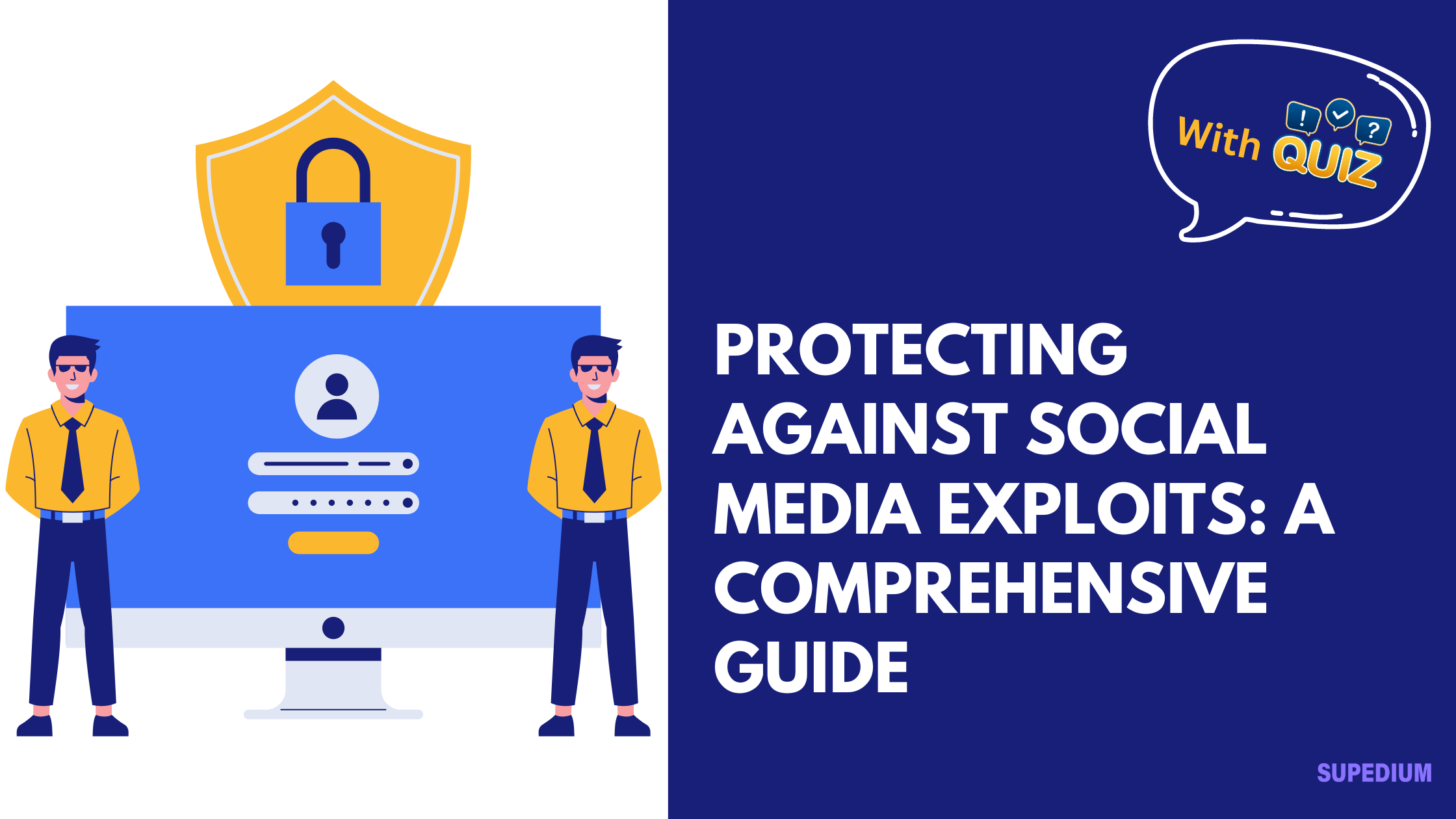Table of Contents
![]()
In today’s digital age, social media platforms are integral to our personal and professional lives. However, their widespread use also makes them prime targets for various exploits that can jeopardize our privacy and security. Understanding these exploits and knowing how to protect yourself is crucial for maintaining a safe online presence. This guide will explore the different types of social media exploits, preventative measures, response strategies, legal considerations, and future trends to help you navigate the complex landscape of social media security.
Understanding Social Media Exploits
1. Phishing Attacks
Phishing is a deceptive technique used by attackers to trick individuals into providing sensitive information, such as passwords or credit card details. This is typically achieved through fake emails, messages, or websites that appear legitimate. Common phishing tactics include creating fake login pages or sending messages that appear to be from trusted sources. Recognizing phishing attempts can be challenging, but there are telltale signs, such as unexpected emails with urgent requests or links to unfamiliar websites.
2. Account Compromise
Account compromise occurs when attackers gain unauthorized access to your social media accounts. This can happen through various methods, including password guessing, social engineering, or exploiting weak security settings. Signs of a compromised account include unusual activity, unexpected password changes, or messages sent from your account that you did not initiate.
3. Impersonation and Fake Profiles
Impersonation involves creating fake profiles that mimic legitimate individuals or organizations. Attackers use these profiles to deceive others, spread misinformation, or commit fraud. The risks associated with impersonation include damage to personal reputation, financial loss, and privacy invasion. Identifying fake profiles often involves checking the account’s activity history, profile details, and verifying through other communication channels.
4. Data Breaches
Data breaches involve unauthorized access to personal information stored by social media platforms. This can lead to exposure of sensitive data, such as contact details, messages, and more. Breaches can occur due to vulnerabilities in the platform’s security or malicious attacks. Understanding the extent of a breach and its impact is essential for mitigating potential harm.
5. Scams and Fraud
Social media scams and frauds are designed to deceive users into giving away money or personal information. Common scams include fake investment opportunities, fraudulent giveaways, and phishing schemes disguised as contests or surveys. Recognizing these scams often involves being skeptical of offers that seem too good to be true and verifying the legitimacy of sources.
Preventative Measures
1. Password Management
Strong, unique passwords are a fundamental defense against social media exploits. Create passwords that combine letters, numbers, and special characters, and avoid using easily guessable information. Password managers can help generate and store complex passwords securely. Additionally, enabling multi-factor authentication (MFA) adds an extra layer of protection by requiring a second form of verification, such as a code sent to your mobile device.
2. Privacy Settings
Adjusting privacy settings on social media platforms is crucial for controlling who can view and interact with your content. Review and modify your privacy settings regularly to ensure they align with your desired level of privacy. Also, manage app permissions to limit access to your data by third-party applications.
3. Educating Yourself and Others
Awareness is key to preventing social media exploits. Stay informed about the latest threats and phishing techniques by following security news and updates. Educate your family and friends about safe social media practices, such as recognizing suspicious messages and avoiding sharing personal information publicly.
4. Monitoring and Regular Audits
Regularly monitoring your social media accounts helps detect any unauthorized activity early. Check for unfamiliar logins, messages, or changes to your account settings. Security tools and software can assist in monitoring your accounts and alerting you to potential threats.
Responding to Social Media Exploits
1. Immediate Actions
If you suspect a social media exploit, take immediate action to mitigate damage. Change your passwords and enable MFA to secure your accounts. Report the exploit to the social media platform to help prevent further issues and notify relevant parties, such as financial institutions or personal contacts, to safeguard against potential fraud.
2. Recovering Compromised Accounts
To regain access to a compromised account, follow the platform’s recovery procedures, which often involve verifying your identity and resetting your password. After regaining access, review your account for any unauthorized changes and ensure that your security settings are up to date.
3. Handling Data Breaches
If you’re affected by a data breach, assess the extent of the breach and understand which of your data might be exposed. Follow the platform’s specific recovery instructions and consider seeking legal or professional advice if the breach has significant implications.
Legal and Ethical Considerations
1. Legal Protections
Understanding legal protections can help you navigate the aftermath of a social media exploit. Familiarize yourself with relevant laws and regulations, such as the General Data Protection Regulation (GDPR) or the California Consumer Privacy Act (CCPA), which provide guidelines for data protection and user rights. Reporting exploits to authorities may also be necessary for legal recourse and investigation.
2. Ethical Use of Information
When dealing with information obtained through exploits, it’s important to act ethically. Avoid using or disseminating any sensitive information that you may come across, and respect the privacy and confidentiality of others involved.
Future Trends and Challenges
1. Evolving Threats
Social media threats are continuously evolving as attackers develop new techniques and technologies. Staying updated on emerging threats and adapting your security measures accordingly is essential for maintaining protection. Future threats may include advanced phishing methods, sophisticated malware, and other novel attack vectors.
2. Advancements in Protection
Advancements in security technologies, such as artificial intelligence and machine learning, are enhancing threat detection and response capabilities. These innovations can help identify and counteract threats more effectively, but it’s crucial to remain vigilant and proactive in implementing security measures.
Conclusion
Protecting yourself against social media exploits requires a proactive approach that includes understanding potential threats, implementing preventative measures, responding effectively to incidents, and staying informed about legal and technological developments. By adopting these practices, you can safeguard your online presence and minimize the risks associated with social media.






Be the first to comment